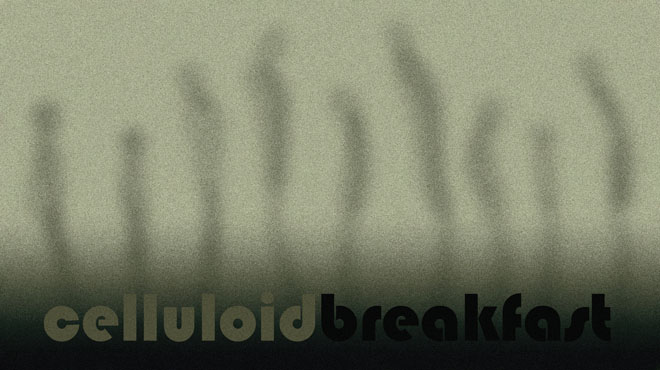Monday, 22 March 2010
easter hiatus.
Celluloid Breakfast (and sibling site Celluloid Sushi) will be on undetermined hiatus through Easter due to a silly amount of educational obligations. As always, many thanks for everyone who has visited the blog so far, you give me much-needed drive! I will make sure to keep watching and reviewing films when I get the chance, and I should be back in black within a month.
Sit tight and happy holidays!
love micmac•
Monday, 15 March 2010
THE SECRET OF HER EYES (ARGENTINA/2009/JUAN JOSÉ CAMPANELLA)
Winner of the 2009 Best Foreign Film Oscar, The Secret Of Her Eyes is an engaging murder mystery romp, placing as much focus on the lives of the investigators as the case itself. Seasoned actor Ricardo Darín puts in an excellently stoical performance as Benjamín. But without placing too much emphasis on visual attractiveness, one can’t help but feel that The White Ribbon was robbed of the Oscar – asides from an incredible handheld sequence in which Benjamín and Pablo chase Isidoro during a football match, the film’s shooting style is peculiarly unremarkable.

Saturday, 13 March 2010
THE SEVENTH CONTINENT (AUSTRIA/1989/MICHAEL HANEKE)
In many ways, The Seventh Continent is a very admirable first feature. Michael Haneke’s infamous awkward long takes are used here in the same way they have been throughout his career, establishing his immediately recognisable style. The same can be said for the film’s deceptive pacing – by the time it has finished, the viewer is left to wonder if they really saw everything they thought they did. More unusually, Haneke manages to keep the audience magnetised through what should be offputtingly dull and inaccessible. A sequence where a cashier frantically types in codes for a deluge of items on the conveyor belt succinctly delineates the family’s disillusionment with life, the aggressive sounds of the receipt printer serving as a death knell.

Wednesday, 10 March 2010
SANKOFA (BURKINA FASO/1993/HAILE GERIMA)
The film’s title Sankofa (also the name of the mystic) is a succinct Akan word meaning “to revisit to the past, remember it, and use it to understand the future”, and aptly summarises the film’s intent. Despite the farcical nature of the story (time travel and real world history nary a serious film make), Haile Gerima treats the subject of slavery with the utmost care, pairing the frightening image of Mona stripped almost to the bone with a raw soul soundtrack. His somewhat commercial treatment of the film is a reminder that not nearly enough films have been made about the Maafa, or the African Holocaust. But as emotionally affecting as it can be, Sankofa seems to be missing something, particularly in making the link between Mona and her need to discover the history of slavery.

Monday, 8 March 2010
THE LIMITS OF CONTROL (USA/2009/JIM JARMUSCH)
It is hard to sum up The Limits Of Control after just one viewing. By deliberately eschewing familiar narrative traits, director Jim Jarmusch demands special attention to detail from the audience, but the film’s slow pacing and the repetitive nature of the meetings often drive away interest. In essence, it is a mystery reluctant to be solved, Christopher Doyle’s stellar cinematography burnishing the more incomprehensible moments to a pretty shine. But even at his most obscure, Jarmusch’s boyish sense of humour remains, with lines such as “sometimes I like it in films when people just sit there, not saying anything”.

Thursday, 4 March 2010
SOUND OF THE MOUNTAIN (JAPAN/1954/MIKIO NARUSE)
Based on the eponymous novel by Nobel Prize winner Yasunari Kawabata, Sound of the Mountain is a subtle but comprehensive study of a family concerned with expectations and responsibility. The films of director Mikio Naruse often feature women who quietly carry the weight of the world on their shoulders, and Kikuko is a fine example of this, balancing her own wishes and desires with those of her adopted family. Naruse’s film also reflects neatly on themes of death and memory, particularly in the character of Shingo. As he succumbs to old age, Shingo holds on to the fragments of the past that may never resurface, and his romantic feelings for Kikuko echo a former longing he had for his wife’s deceased sister. An elegant family drama.

Tuesday, 2 March 2010
WAVELENGTH (CANADA/1967/MICHAEL SNOW)
Wavelength requires a little patience, particularly bearing in mind the alienating sound of the sine wave, but it is undoubtedly a worthwhile experiment. Snow, who is known for playing at length with camera movement, returns film to quasi-purity – the camera is no longer selective, but is reduced to one constant motion, as is the sound. At times, the camera’s transformations render the room unrecognisable – as the image flips from negative to positive, the negative space of the windows almost leaves an imprint on the eye. By pushing the boundaries of the medium, Wavelength gives us an insight of a world between the lines.





